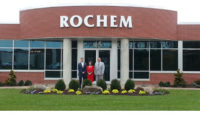Successful Supplement Sales

The following information is provided by the American Botanical Council (www.herbalgram.org), as part of a review presented in their HerbClipâ„¢ Education Mailing Service written by Heather S. Oliff, Ph.D. For more information, see the credit at the end of this article.
The American herbal market has suffered from negative press, but there are positive actions herbal manufacturers can take for a brighter future. Increasing self-regulation of product quality, establishing standardized amounts of active ingredients, increasing the number of clinical trials to back up claims and gaining the support of physicians and pharmacists will boost consumer confidence and increase supplement sales.
A look at the European supplement market, along with some bright spots in the U.S., provides insights.
European view: lessons to learn
Sales of herbal supplements remain strong in Europe. One main difference between American and European markets is that the European herbal industry gets the backing of physicians and pharmacists because the products are generally of good quality and are usually standardized. In the established European markets, most herbal products are regulated as drugs, while U.S. regulators must see herbs as foods.
Following the European example to improve quality, increase regulation, and standardize herbs will improve the market in the U.S. However, quality alone will not assure success. In the U.S., advertising appears to be more important, and the most success comes in getting Americans to associate a particular brand name with quality. Another key difference between European and American markets is the number of ingredients combined in products. The American market often likes combining many ingredients together, even if they don't add any value to the product. Also, American marketers tend to jump on the latest fad items, and abandon items that have worked in the past. It is important to focus on one product and build on it, instead of jumping around.
Women's products show strong sales
Another sector that has had robust growth in the last year is botanical supplements for women. Women are the biggest consumers and purchasers of healthcare products. They account for over 60% of all prescriptions individually, and 75-80% of all healthcare purchases, because they tend to be caretakers for their families.
Examples of some of the best-selling supplements that are aimed at women, particularly to treat menopausal symptoms, are soy supplements (sales were up 116% over 1999, to $41 million), red clover (Trifolium pratense) (up 90%), isoflavone (up 112%), black cohosh (Cimicifuga racemosa) (up 26%), and valerian (Valeriana officinalis) (up 71%). Combination formulas are selling better than single-ingredient women's supplements, and time-release versions are accounting for half of all sales.
Experts believe that growth will continue to rise in this sector. Growth will be driven by demographics, because the number of women age 45-54 is growing annually. Also, increased awareness of the benefits of isoflavone supplements for bone and cardiovascular health, backed by clinical trial results, will increase isoflavone sales. Again, the biggest threat will come from poor quality products, which lead to consumer disillusionment.
Antioxidant lutein promises healthy growth
Antioxidants have also fared well in the market, increasing 43% last year to a total of $60 million. Consumers are looking beyond the established antioxidants like vitamin C, E, and beta carotene to new products in this field. One promising new product is astaxanthin, a potent carotenoid that may have 10 times more antioxidant potential than beta carotene and 500 times more than vitamin E. There are hopes that it can alleviate carpal tunnel syndromes, and clinical trials are underway studying this.
Another hot antioxidant on the market is lutein, which has been shown to protect eye health. Lutein appears to lower the risk of developing age-related macular degeneration (the leading cause of irreversible blindness among Americans age 65 or older) and can protect the eye from other conditions such as cataracts and glaucoma. Other scientific studies suggest lutein is good for tissues other than the eye, and is being researched for effectiveness in preventing breast cancer, heart disease, colon cancer, and protecting skin against ultra-violet radiation. In the most recent 13-week period, lutein had a 232% growth rate. The bulk of sales of lutein have been in the U.S., but the potential market is much broader, extending to the United Kingdom and Japan. Experts estimate that the market size of lutein could be doubled.
The American Botanical Council (ABC) is the world's leading non-profit education organization disseminating science-based information promoting the safe and effective use of herbal medicine. This review was originally distributed as part of the HerbClipâ„¢ Educational Mailing Service. HerbClip and HerbalGram are among the benefits of membership in ABC. To join ABC, logon to http://www.herbalgram.org or, call 800-373-7105, or email abc@herbalgram.org.
Looking for a reprint of this article?
From high-res PDFs to custom plaques, order your copy today!



